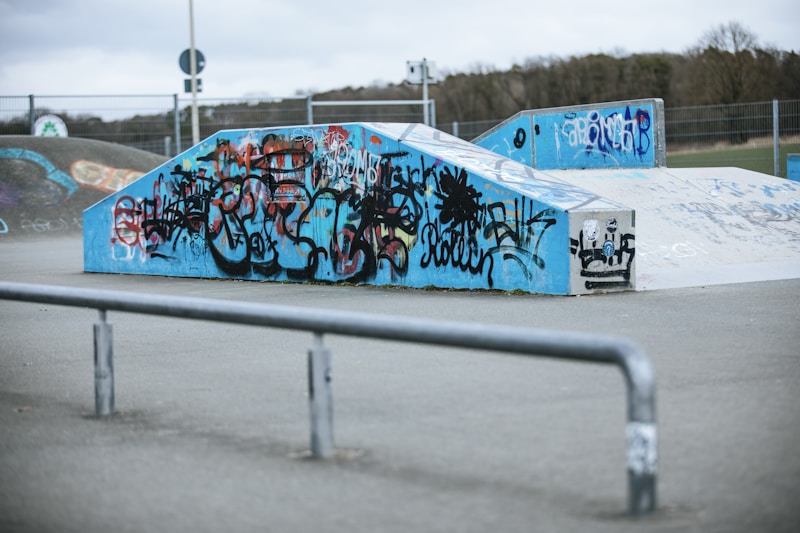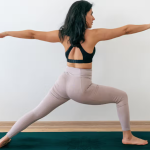What’s it like going to a big yoga convention or festival? Can you really learn anything amongst hundreds of other yogis? Is it worth the money, time and effort? Poppy Pickles writes about her experience at the Iyengar Yoga UK Convention in Harrogate in May this year.
Going to a yoga convention or festival away from home is a full body immersion in yoga. You live, breathe and sleep yoga along with hundreds of other like-minded people. It’s intense, exciting and at times, overwhelming.
The Logistics of a Convention
There were over 400 attendees of the Iyengar Yoga Convention in Harrogate this May, and that many people and their stuff (Iyengar yoga students use a lot of props) makes for some organisational nightmares.
On the first morning we had to register, get a wristband, take mats and equipment up to the hall to stake our place, take our bags back downstairs to one room, hand over our valuables, remove shoes and so on. It was a good hour and a half before we were finally in the hall and ready to begin. Although on the whole, the atmosphere was one of peaceful politeness, there were times when there were some sharp yogi elbows being used to bag that space near the front of the hall. Three top tips based on my experience would be:
- Be prepared for a lot of waiting. Forewarned is forearmed! Bring a book and a patient attitude.
- Be minimal. Make sure you pack the bare minimum to be comfortable as, if you’re travelling up by public transport and lugging three bolsters, blankets and clothes for all seasons, you’ll be exhausted before you even arrive.
- Be organised. Make sure you book everything well in advance, including travel and accomodation. If it’s a big event, the best digs will get booked early, and it makes a massive difference if you’re a short walk from the venue.
The Teacher
The convention was led by a charismatic, handsome, 37 year old teacher called Raya Uma Dutta, sent from the Ramamani Iyengar Memorial Yoga Institute (RIMYI), the Headquarters of Iyengar yoga and where the Iyengar family live and teach. He had been mentored at a young age by the late, great B.K.S. Iyengar himself, who died two years ago, and was still grieving for a man he had clearly had a loving bond with.
His teaching style was varied. To begin with we went deeply into the details of some basic poses, then later, we were jumping to keep up with a fast and furious sequence of poses. “Iyengar yoga is not NOT jumping,” he told us, as we panted and puffed in our efforts to keep up.
See Also: This Is How Iyengar Did A Sun Salutation
He also had a great way of describing yoga poses and really came into his own when he communicated through yoga. This elevated the poses into the art form they are. Here are just some of his poetic yoga descriptions:
– In Tadasana, the base of the pose are the roots and the skin is the blossom.
– In Uttanasana the upper body needs to fall down like rain.
– In Virabhadrasana I the back leg is in the past, the front leg is in the future and the body is firmly in the present.
– Our bodies should be like musical instruments in asanas: once they are the right place, they resonate.
On the second day we did a group practice. We gathered our mats in a horseshoe around him, and then began doing yoga poses all together. Gradually, people began to reach their limits and stood to watch Raya perform with breathtaking ease. By the time the hour was up, he was the only one still going, dropping gracefully into Bridge pose from a handstand. No one there could help but be inspired.
Oh, and the Stories!
There was an element of the convention that happened spontaneously, facilitated by Raya, and his thirst to find out all he could about his teacher B. K. S. Iyengar or ‘Guruji’ as he called him (meaning ‘respected teacher’ in Hindi).
He asked all the Senior teachers to come up to the front during a break, and to tell their stories to those assembled. Gradually the entire convention had returned from their break and quietly joined to listen. By the end, we were all wiping our eyes, or laughing, united in our enjoyment of the story-telling.
The Yoga Practice
Conventions are different to any other time you’ll practice yoga just down to the sheer numbers of people all doing it at the same time.
This can cause problems due to the close proximity and sheer lack of space: trying not to smack anyone in the face, trying to follow the directions coming through a microphone from the front of a very large hall, boiling in the sunny patch in the room, freezing under the air-conditioning…
But the overall feeling is one of being part of a yoga community. Yoga can be quite a lonely activity. The real yoga happens at home on your mat, and it’s just you and your body. At a convention there are the communal grunts when being held in a pose for a long time, the collective gasps as we’re told to go into a difficult pose, the united sinking into peace and stillness at the end of the sessions.
The Special Bits
There were a couple of moments where the true meaning of yoga, ‘union’ became manifest.
As Raya was bringing us out of Savasana on the second day he said, “That’s it.” We all slowly sat up. No one spoke. Over 400 people were still, no buzz, no chatter, no gathering of stuff. Raya had said it, ‘that’s it’ – or rather, ‘this is it’ — everyone in that hall was united in the quiet of the present moment.
The second moment was again felt through the quiet of Savasana, but the unity was expressed through word and song. At the very end of the convention Raya asked one of the Senior Teachers if she would read out the first two verses of the Atma Satkam, or Song of the Soul. He then sung them in Sanskrit:
“I am neither ego nor reason, I am neither mind not thought,
I cannot be heard nor cast into words, not by smell nor sight ever caught:
In light and wind I am not found, not yet in earth and sky –
Consciousness and joy incarnate, Bliss of the Blissful am I.”
The sound of those voices, one speaking in English, the other singing in Sanskrit, was a multi-dimensional unity merging cultures, time and space.
The After-Effects
By the time I got home I was literally spent. Mentally, physically and emotionally. This may be because it was my first ever convention and I didn’t pace myself well enough, or it might just be that six hours of yoga a day is exhausting!
However, the effect of being away from home, away from any other influences and being taught alongside so many other yogis was truly inspiring and has given me a real boost. I can’t wait till the next one.













